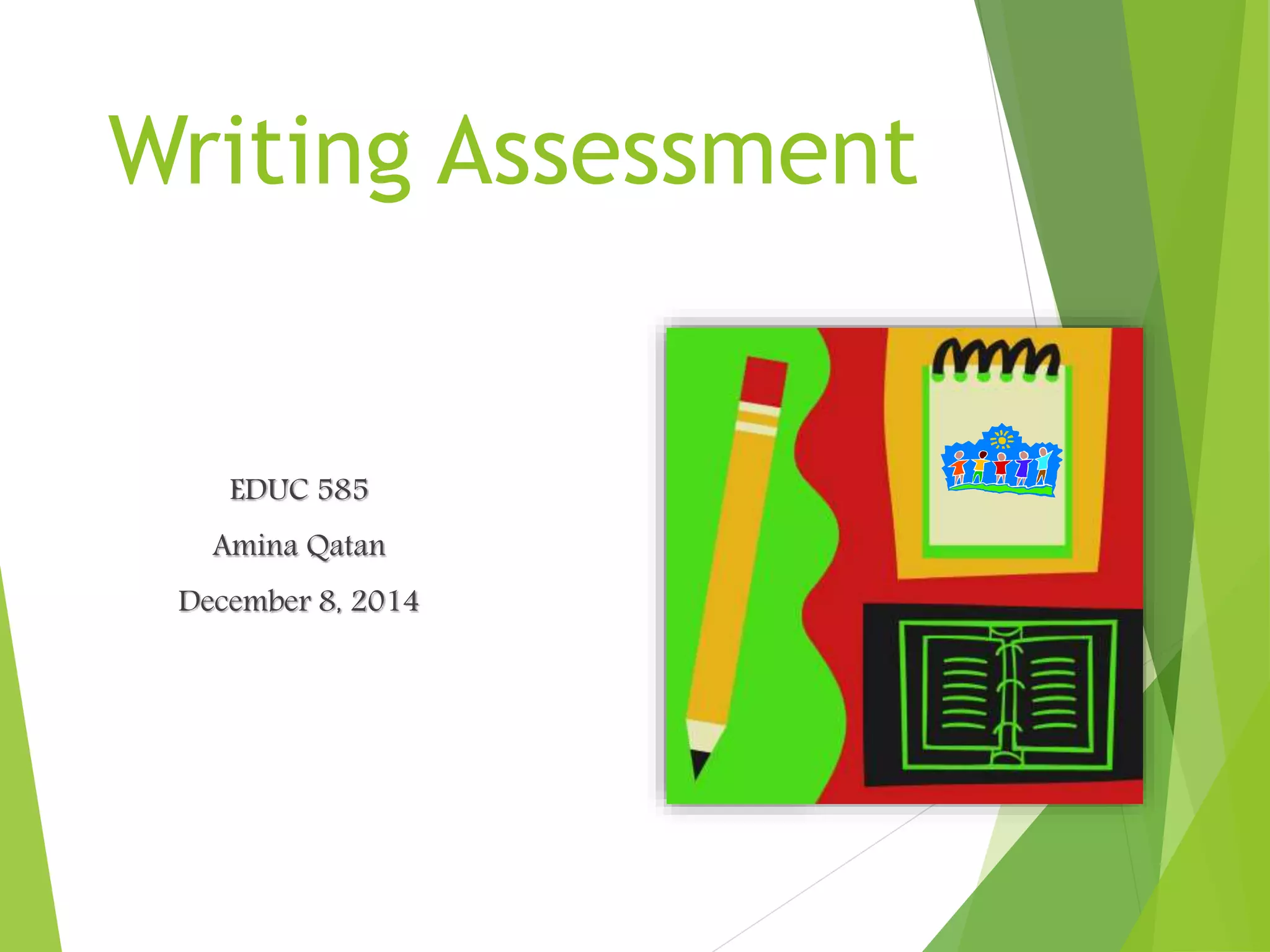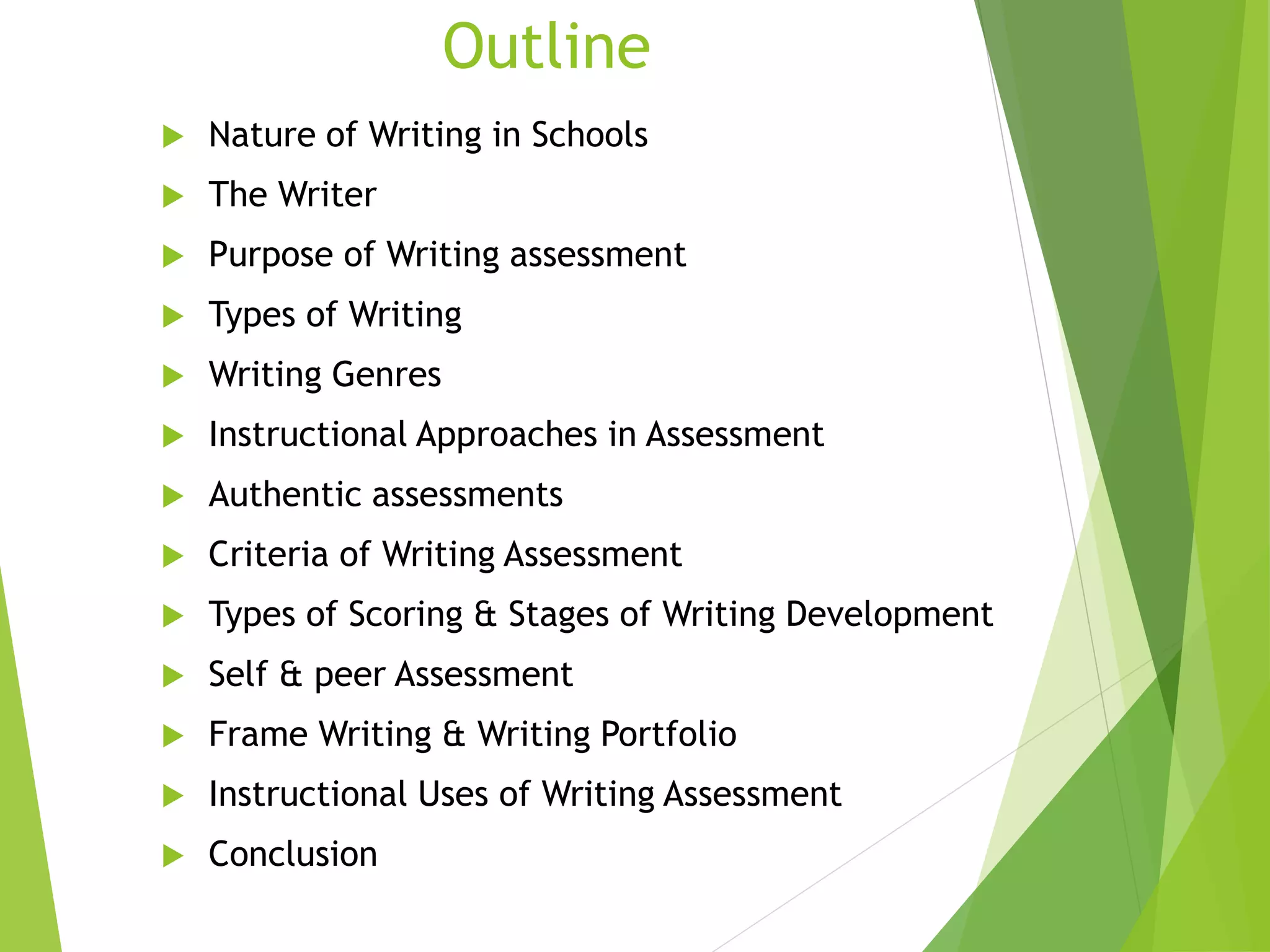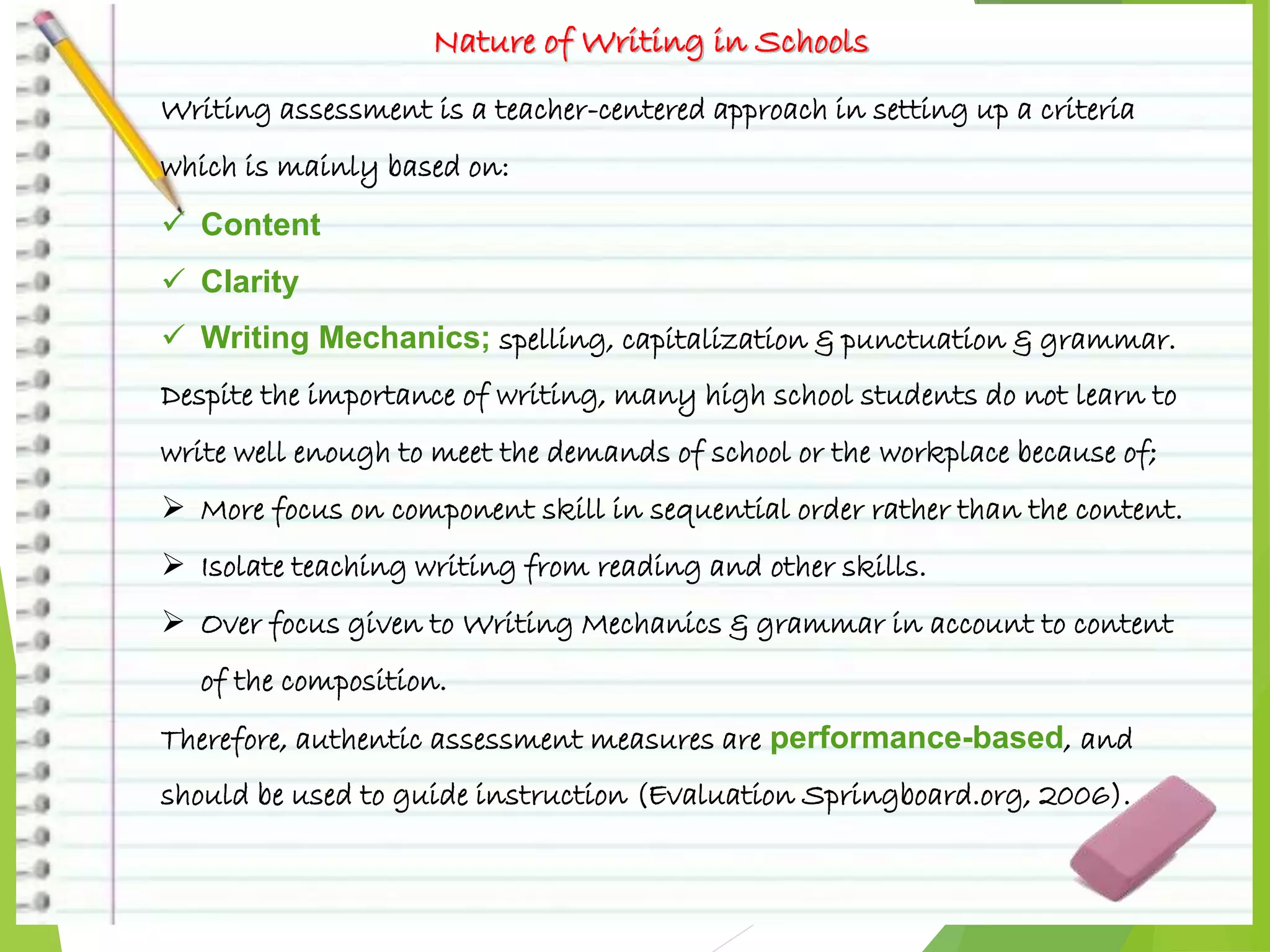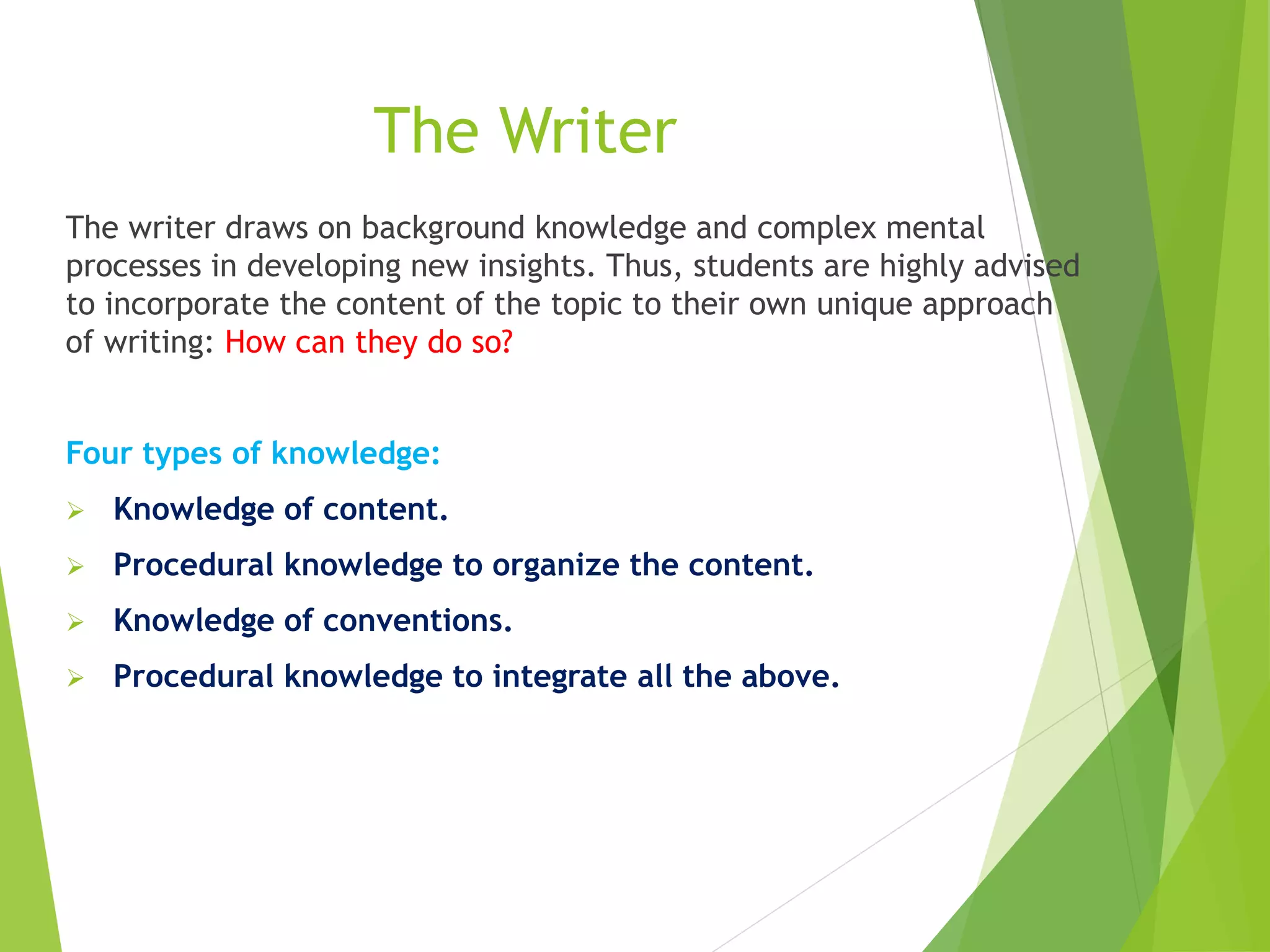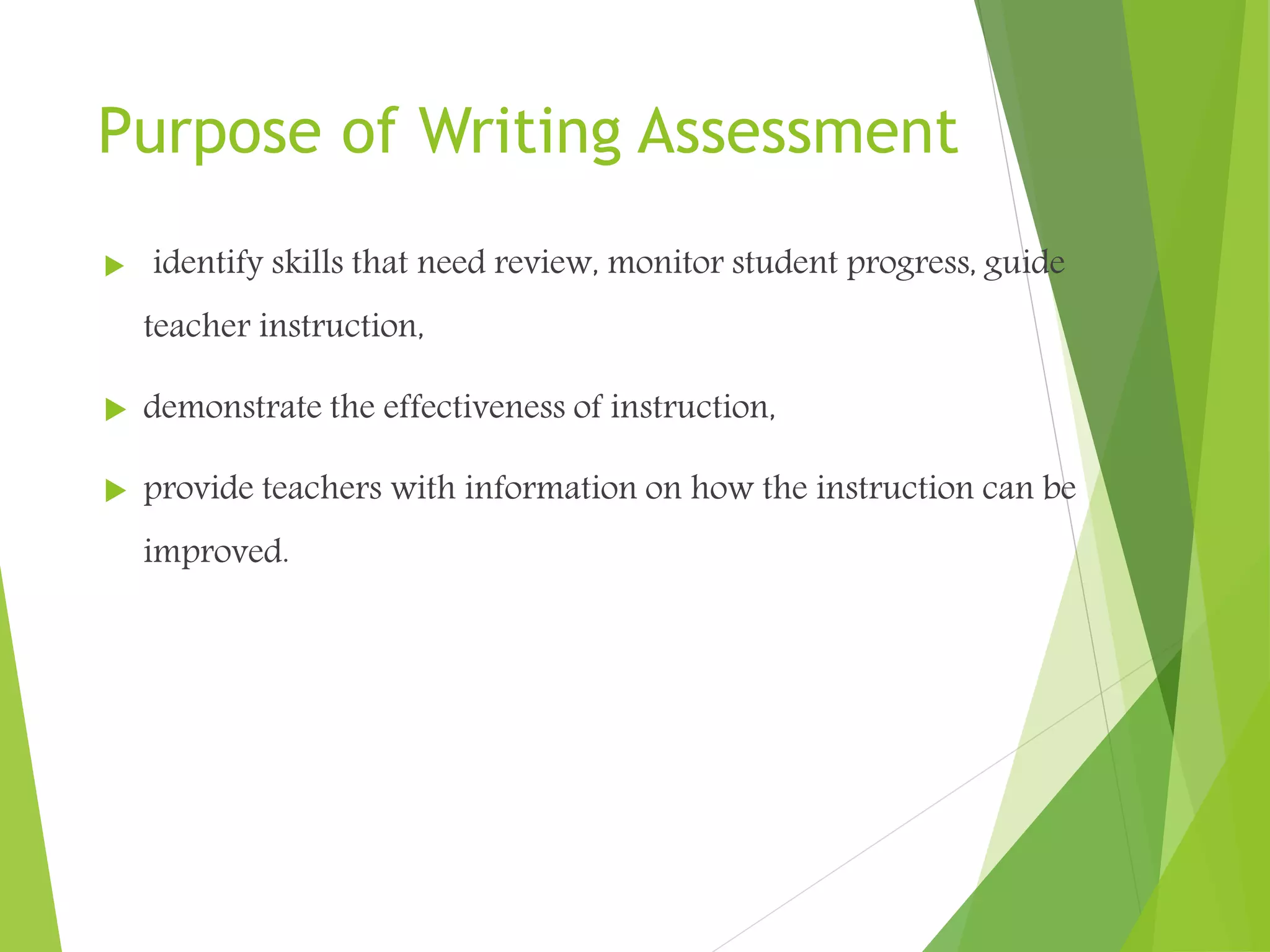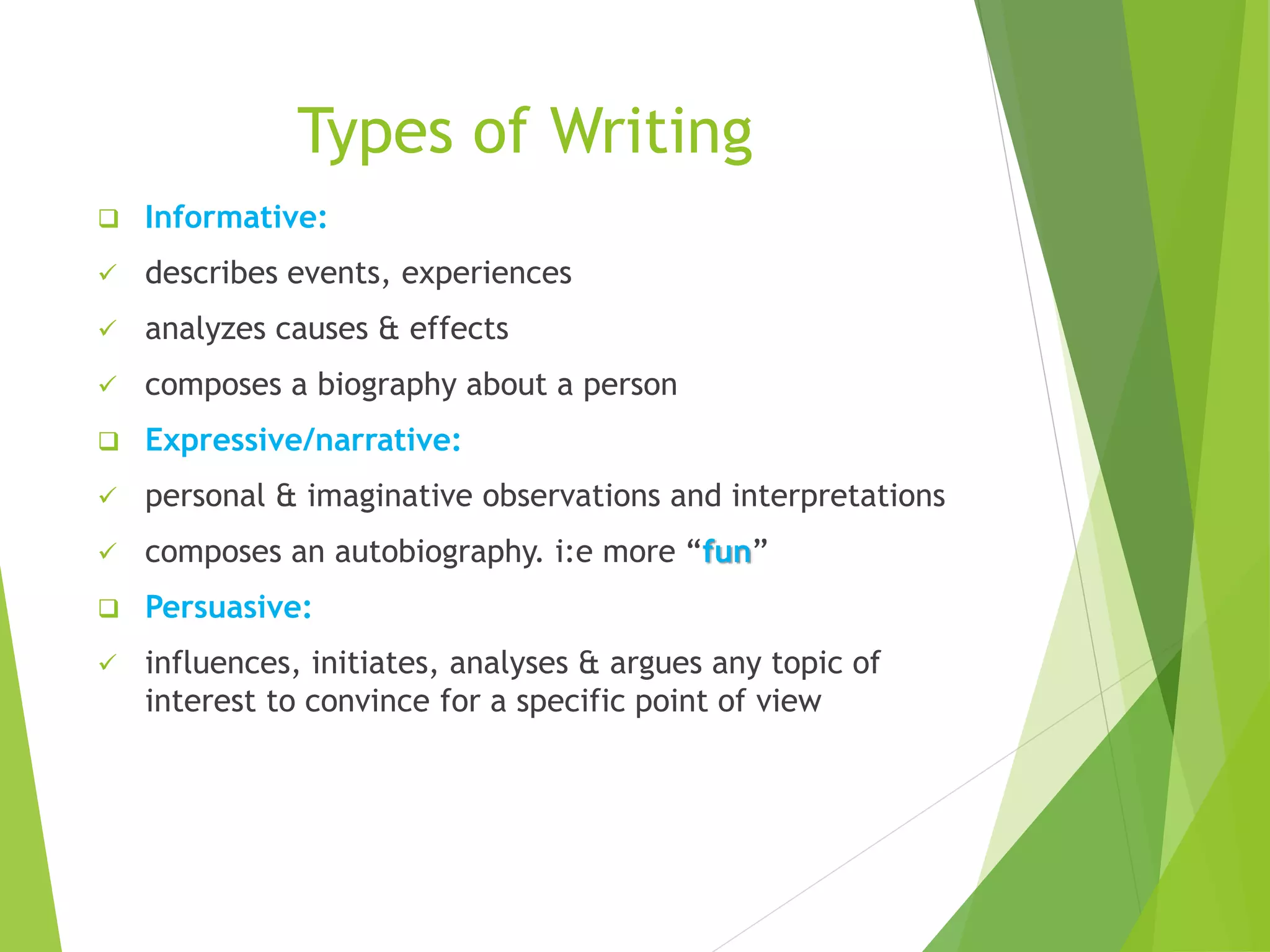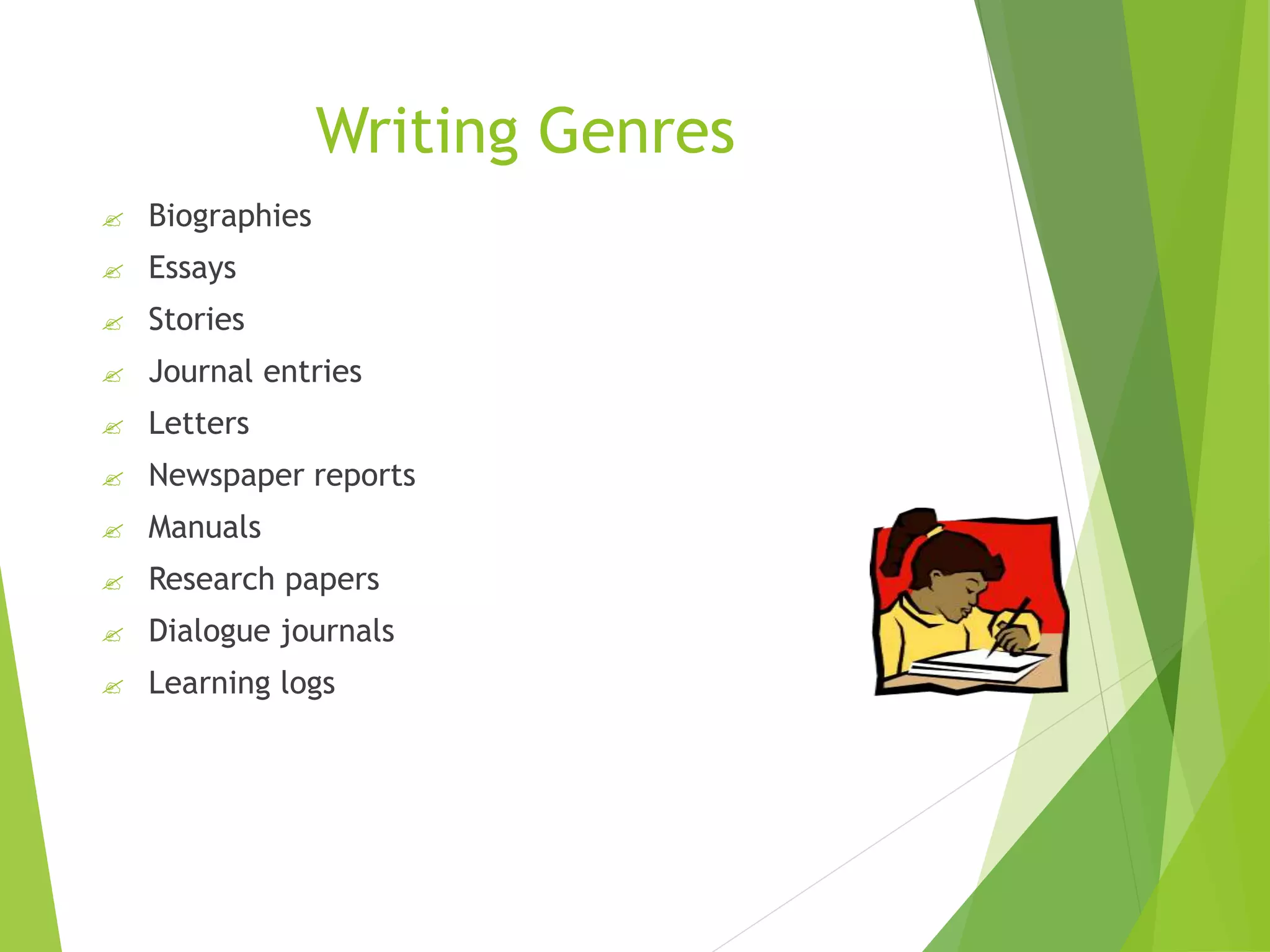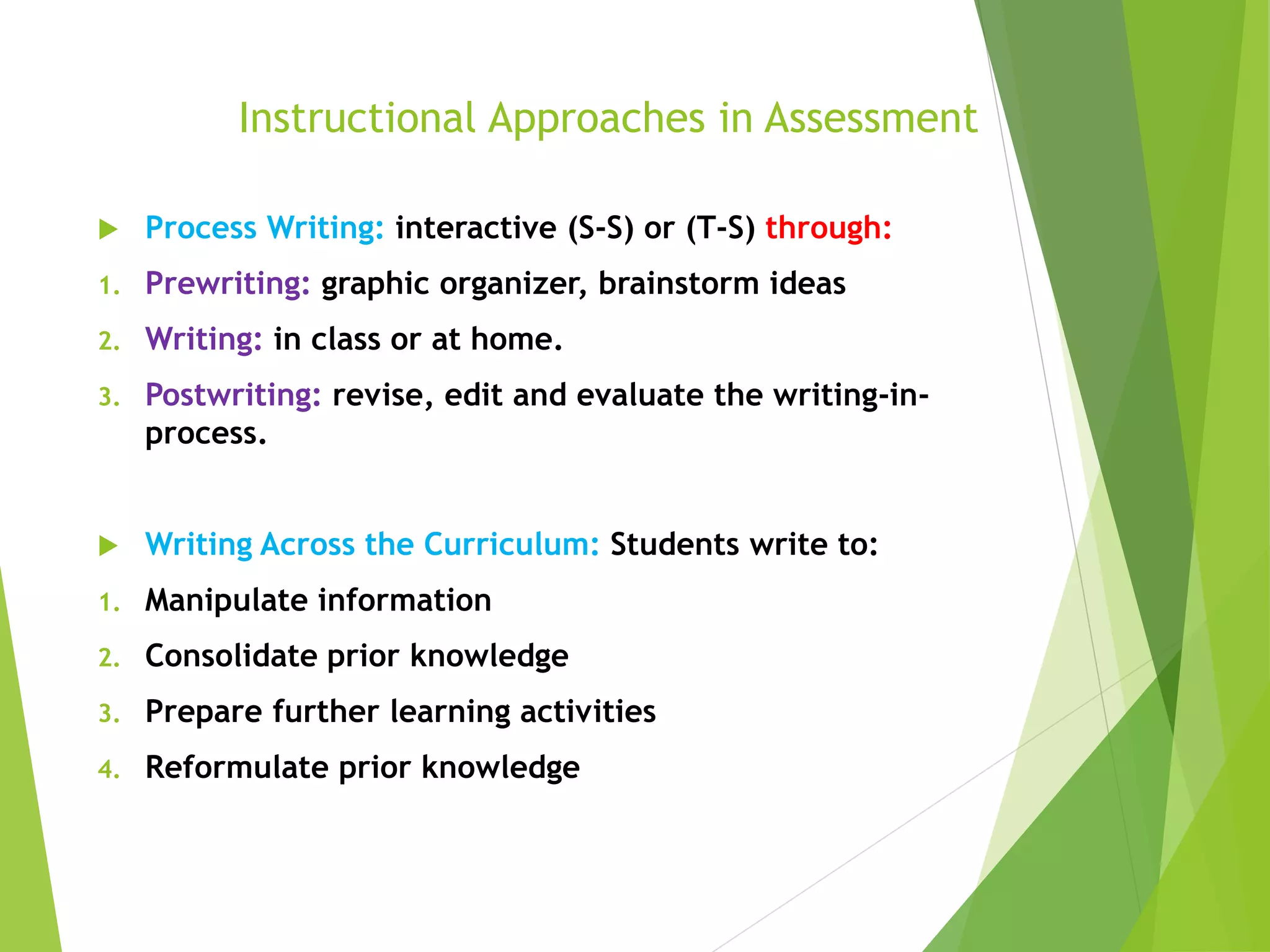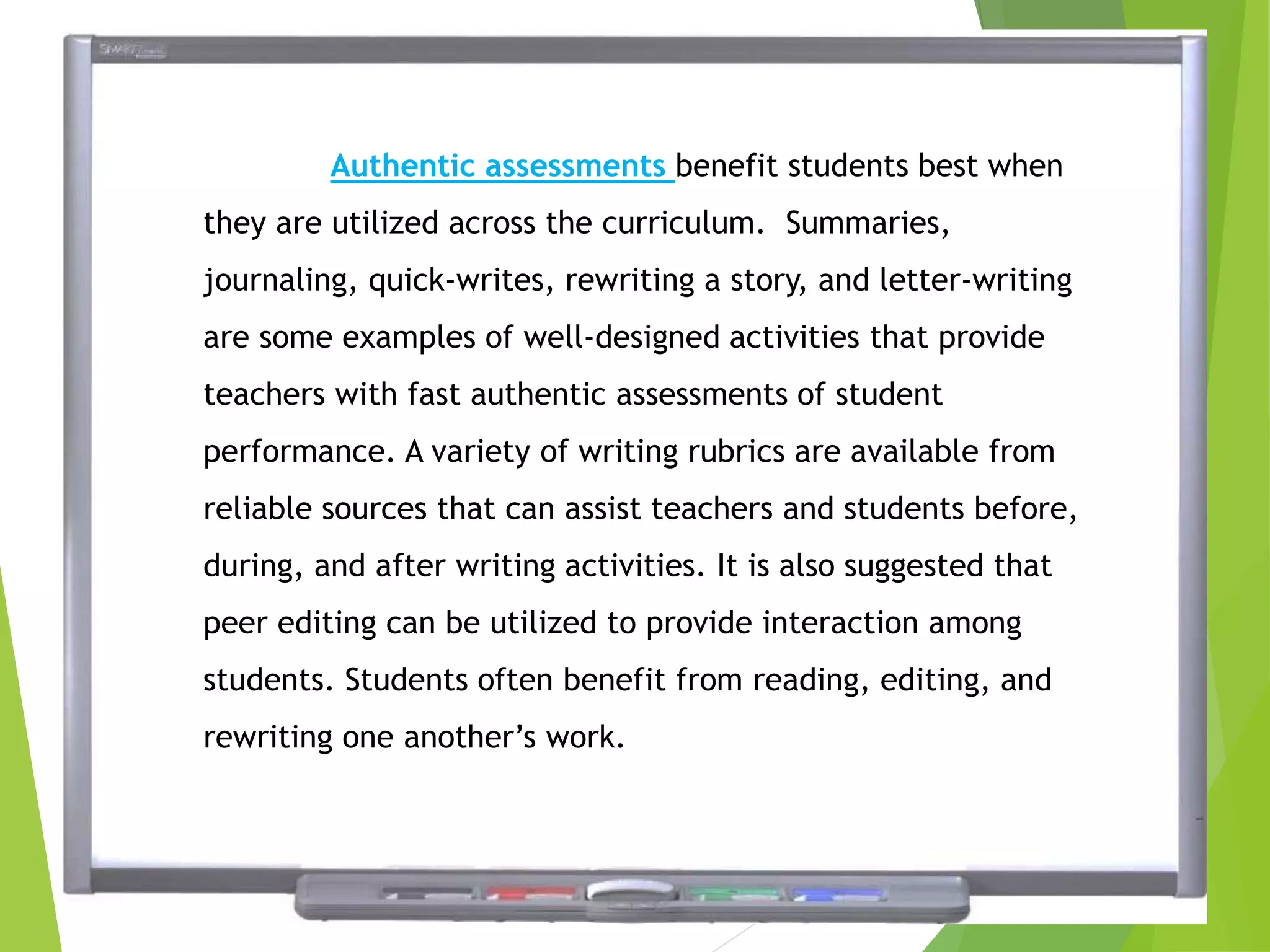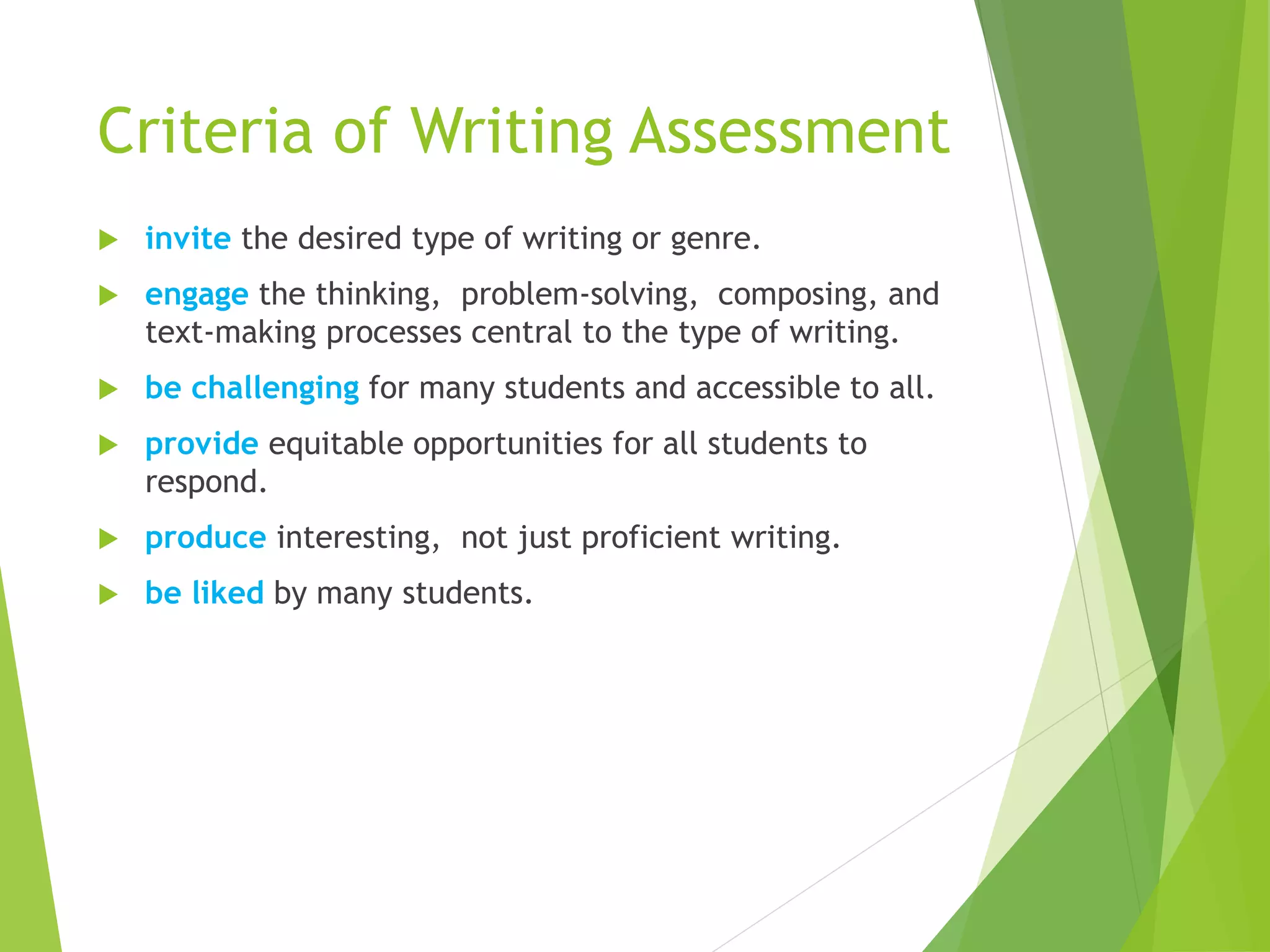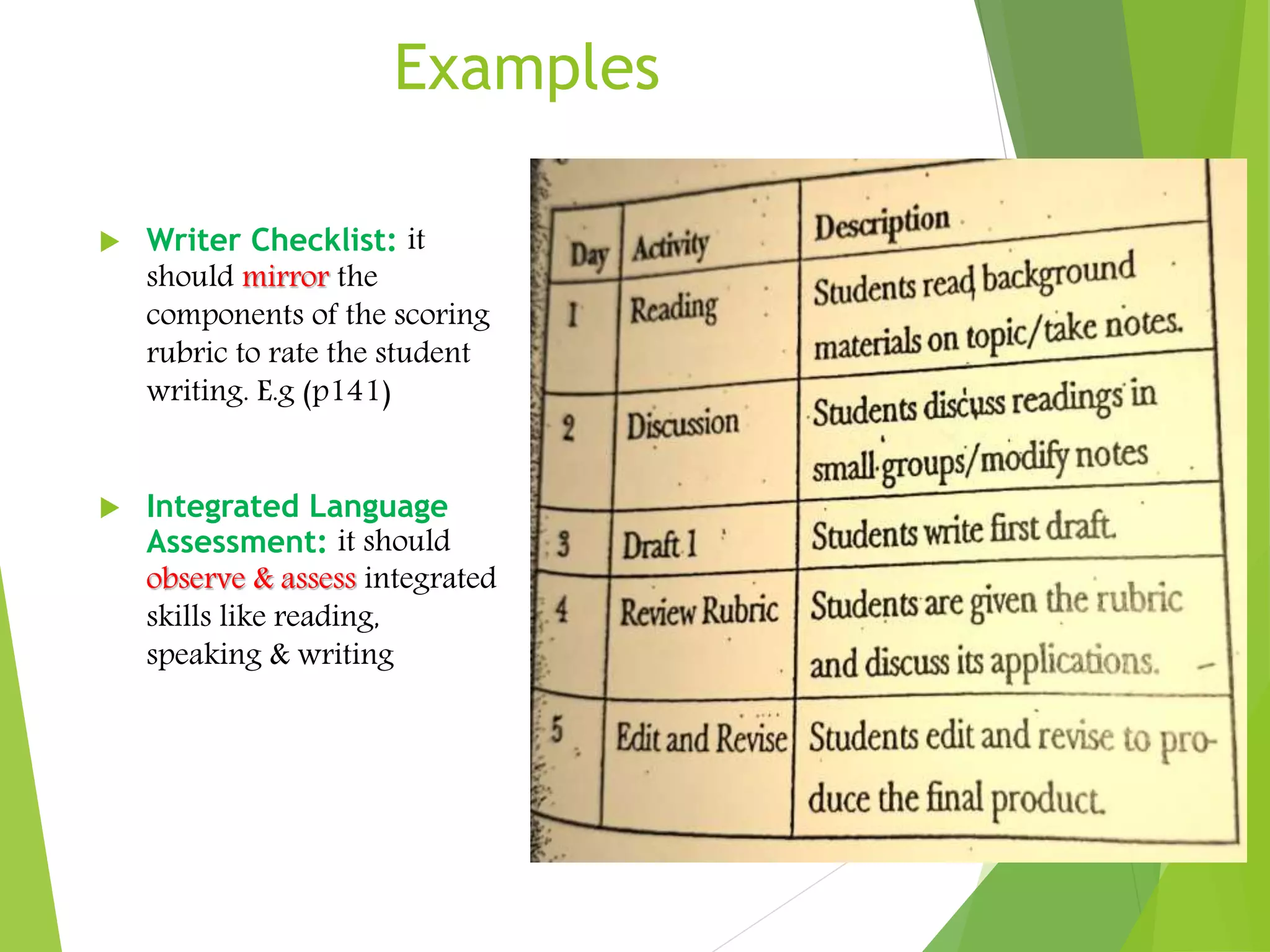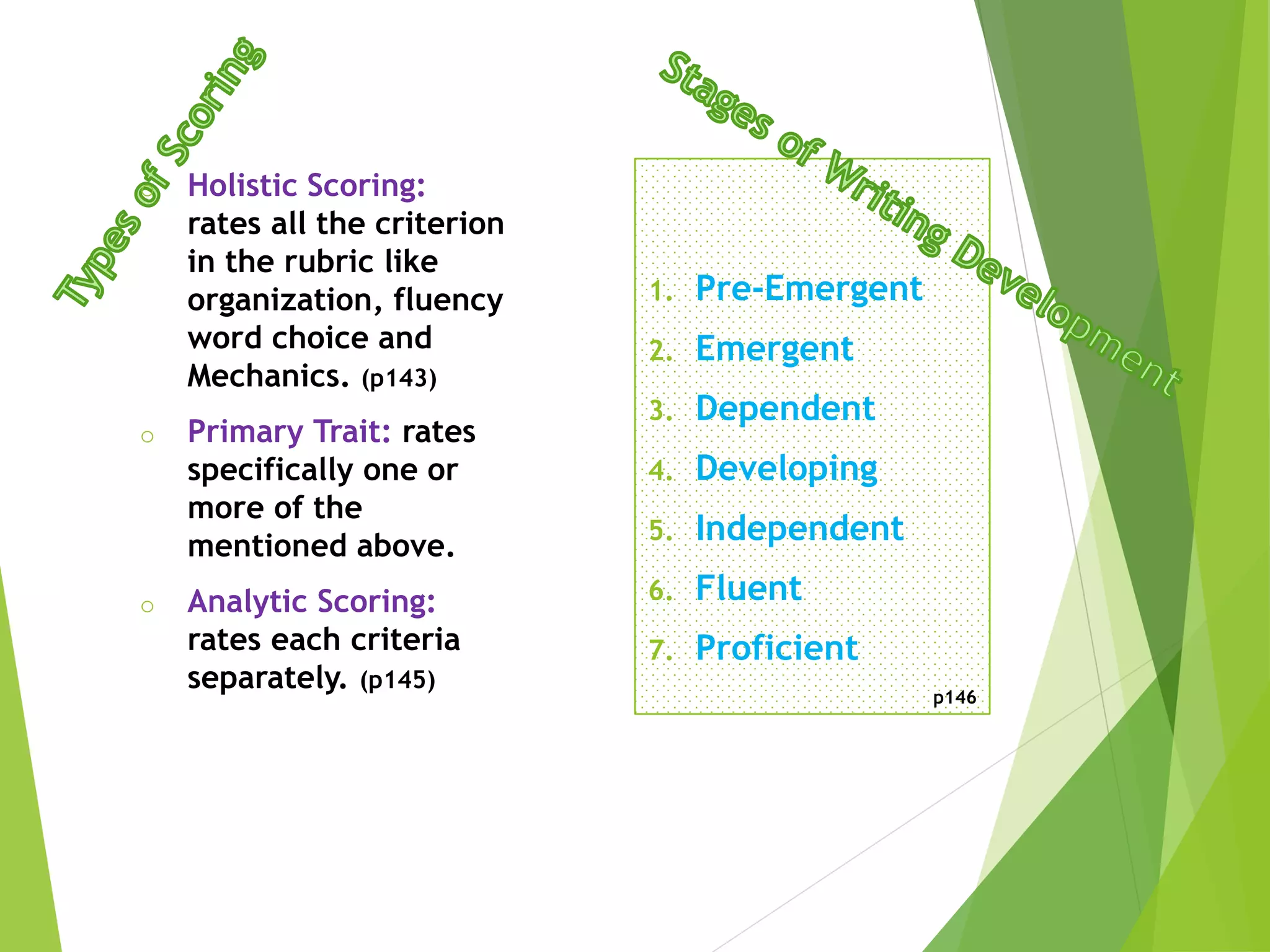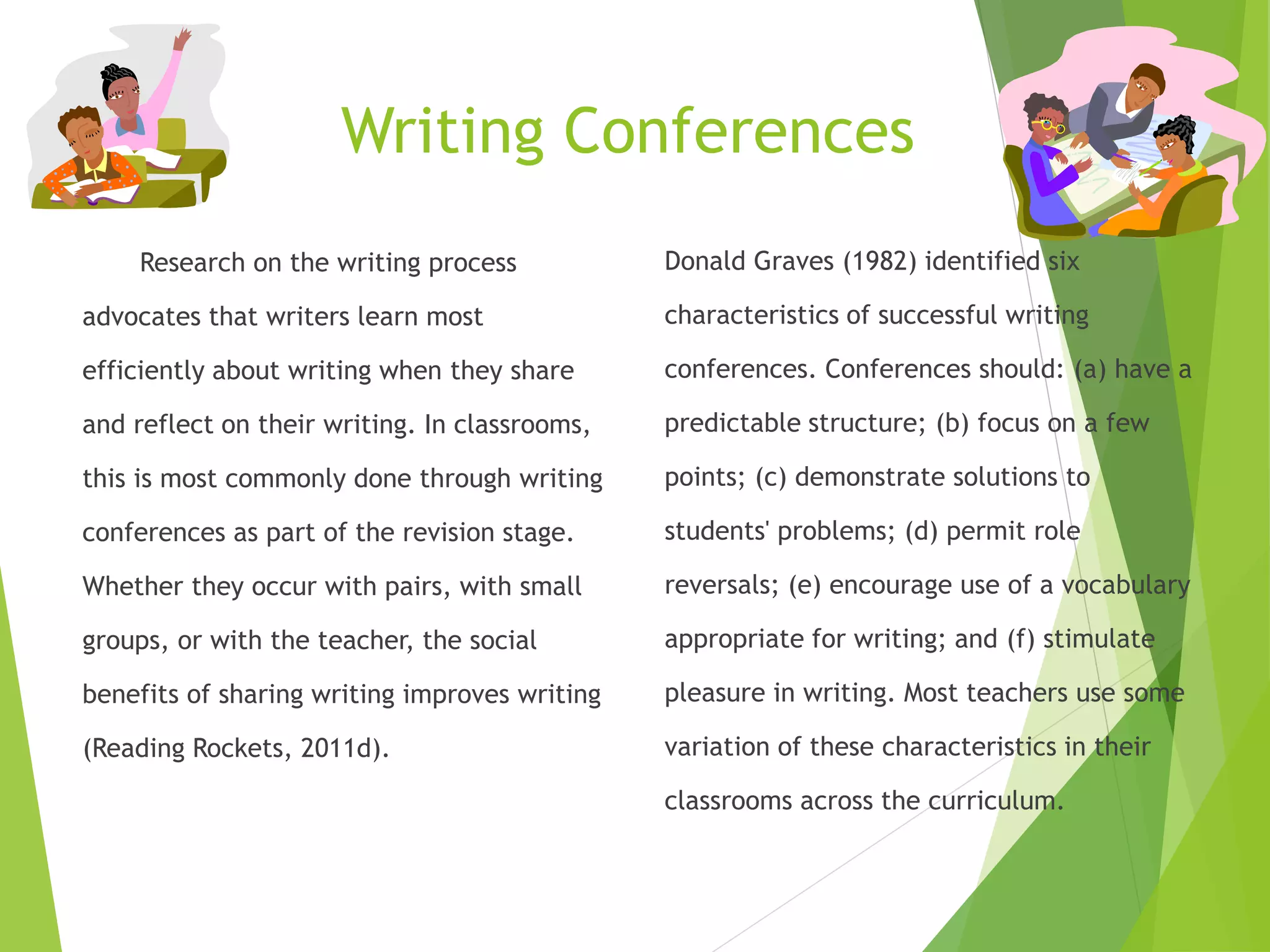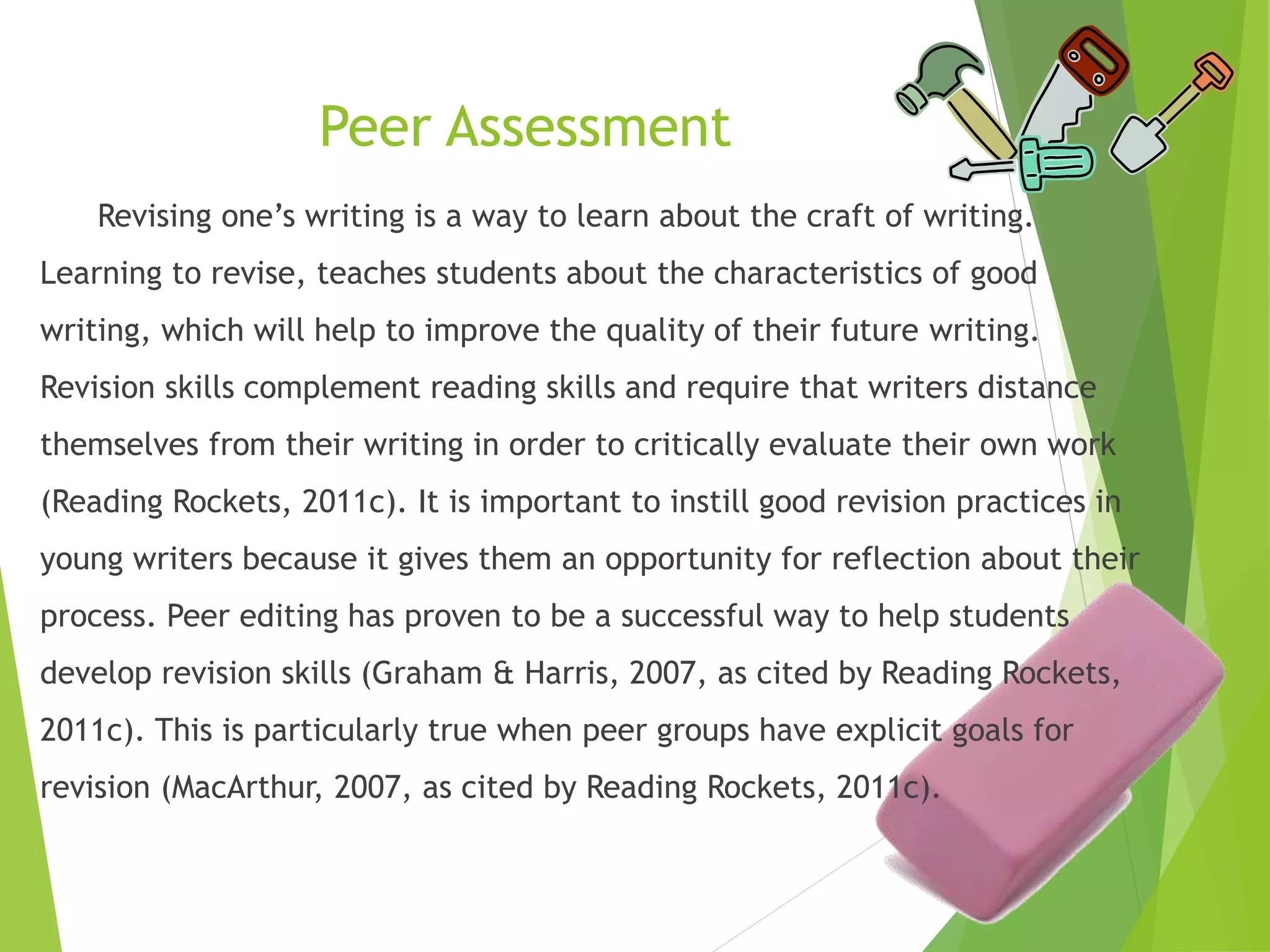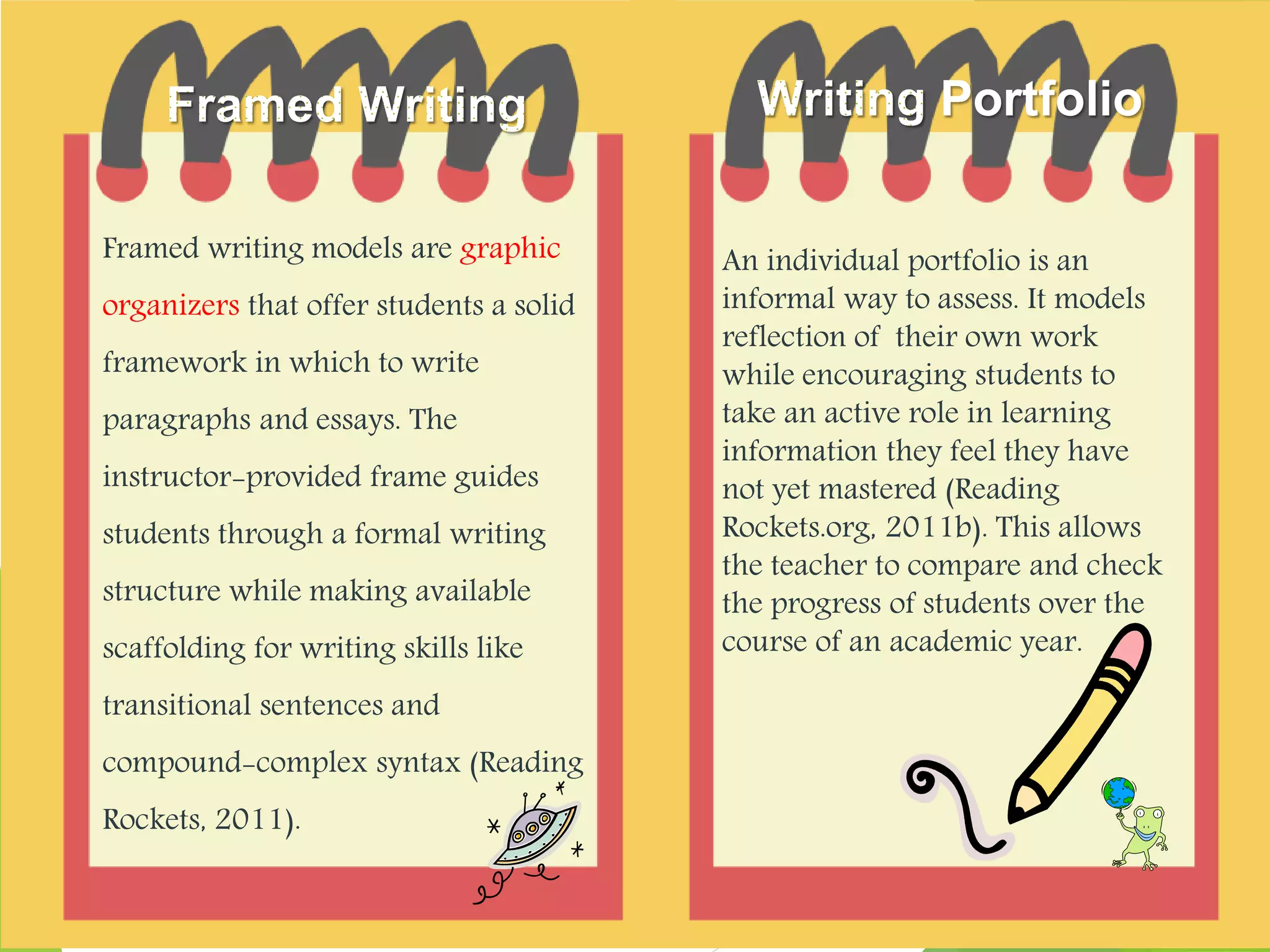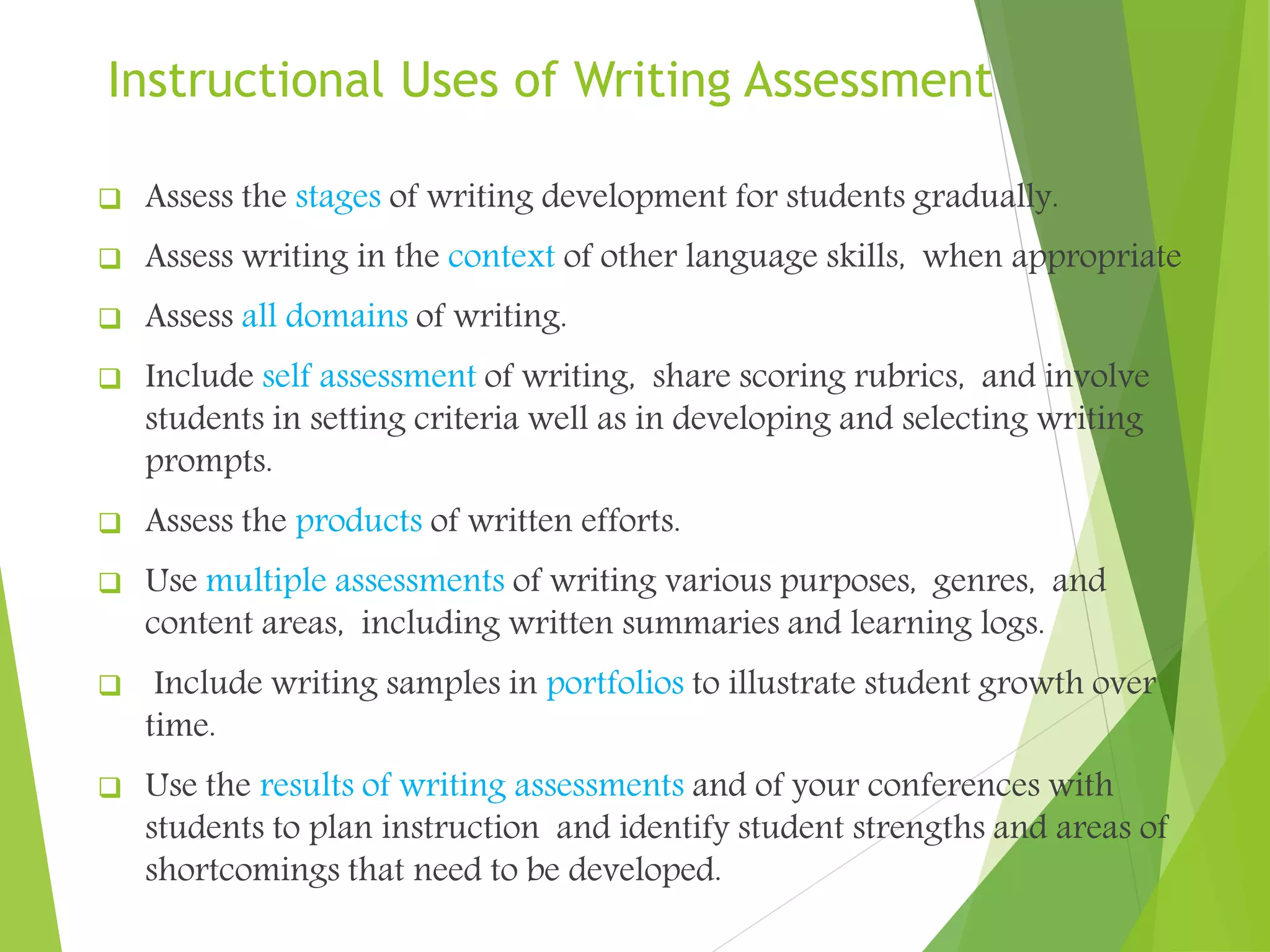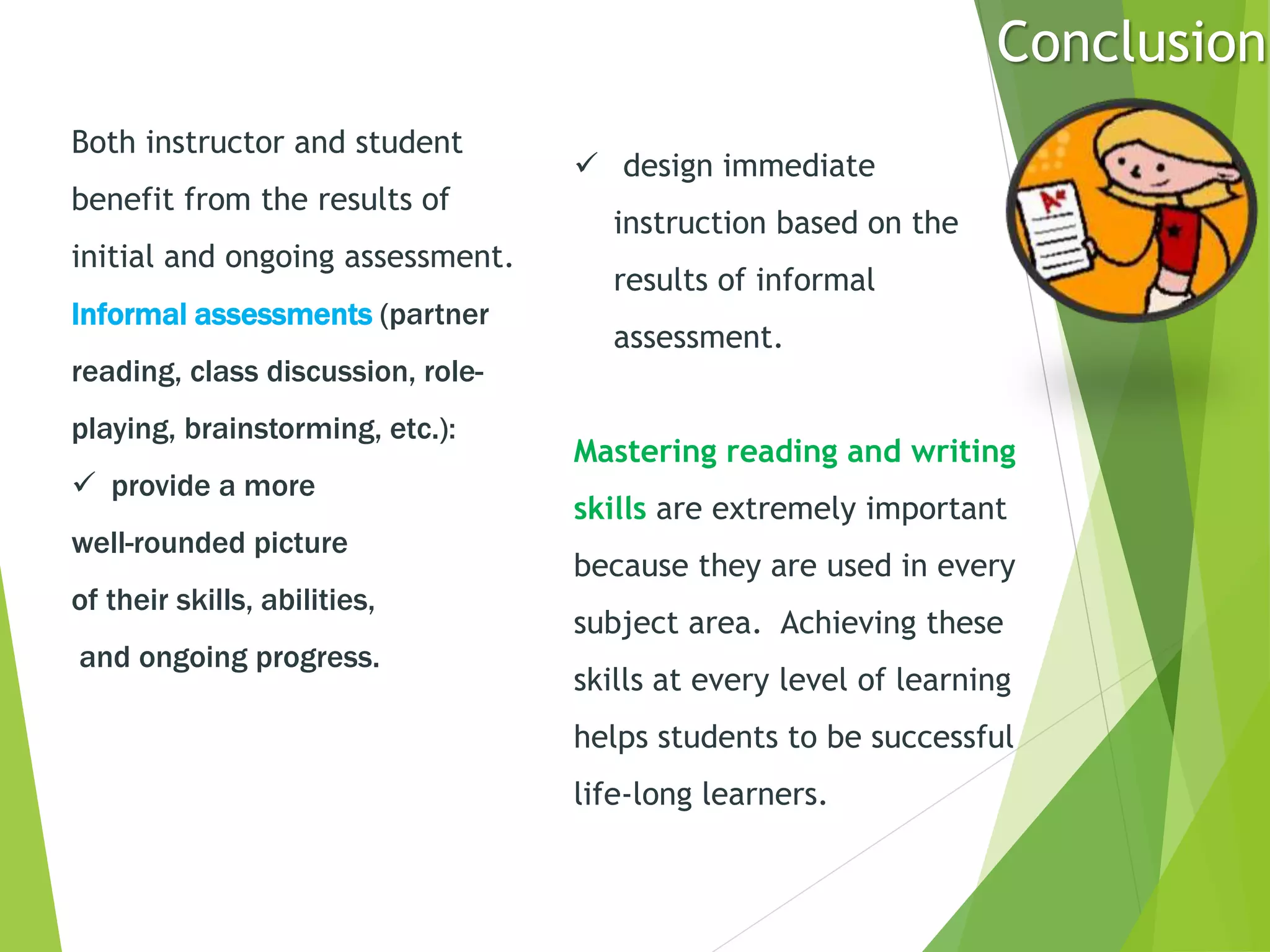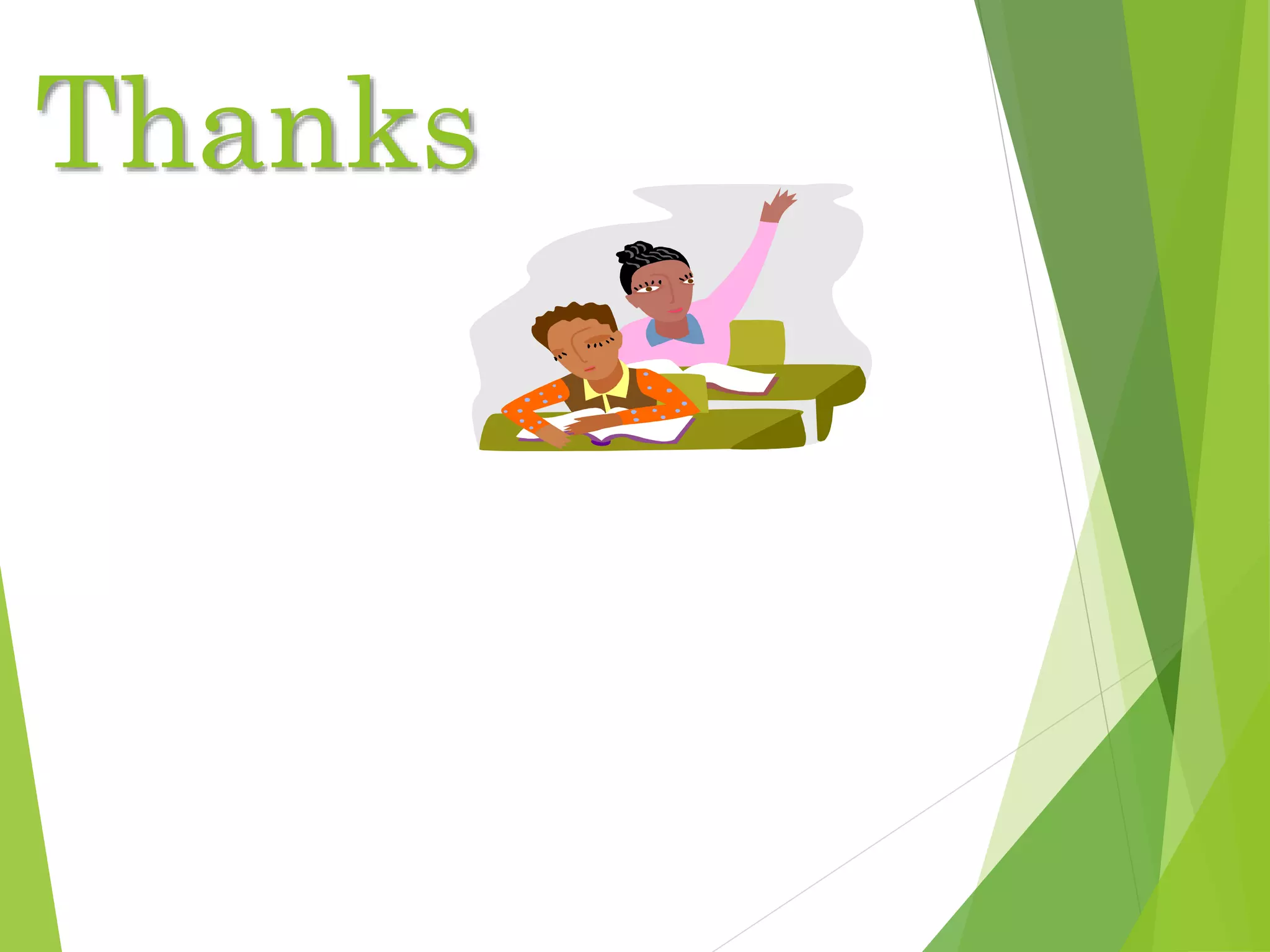This document outlines approaches to writing assessment in schools. It discusses the purpose of writing assessment, which is to identify skills that need improvement, monitor student progress, and guide instruction. It also covers types of writing like informative, expressive, and persuasive pieces. Assessment methods discussed include process writing, rubrics to evaluate content, clarity, and mechanics, self-assessment using tools like checklists, peer assessment through activities like conferencing, and portfolio assessment to track growth over time. The document emphasizes using a variety of informal and formal assessments to obtain a well-rounded picture of students' abilities and inform instruction.
